If you haven’t already, be sure to read the Unit 2 Lesson Tutorial so you know how the lessons work.
Part 1: The Story of Saying Hello
This slideshow could not be started. Try refreshing the page or viewing it in another browser.
“The Story of Saying Hello”
by The Aramaic New Testament
Start the audio above and follow the instructions.
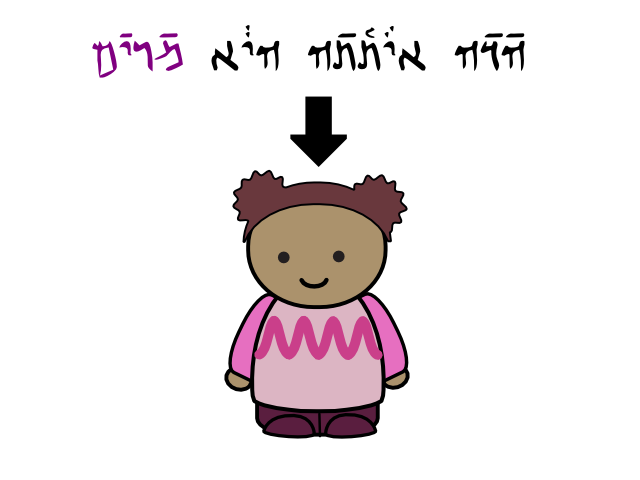
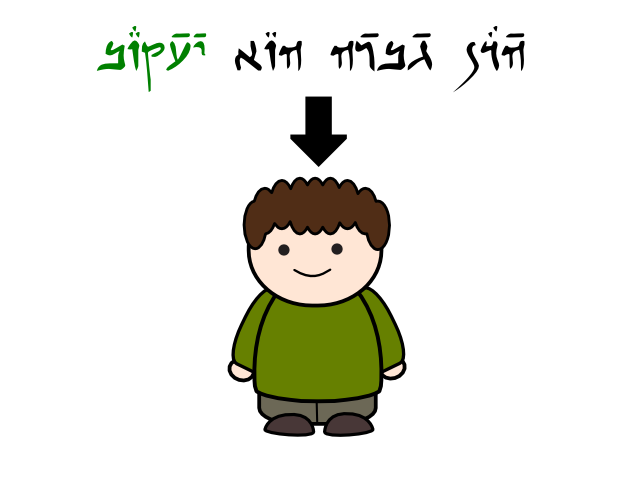
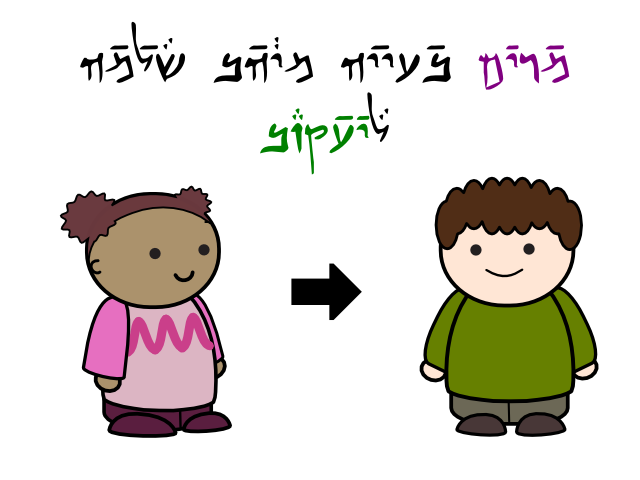
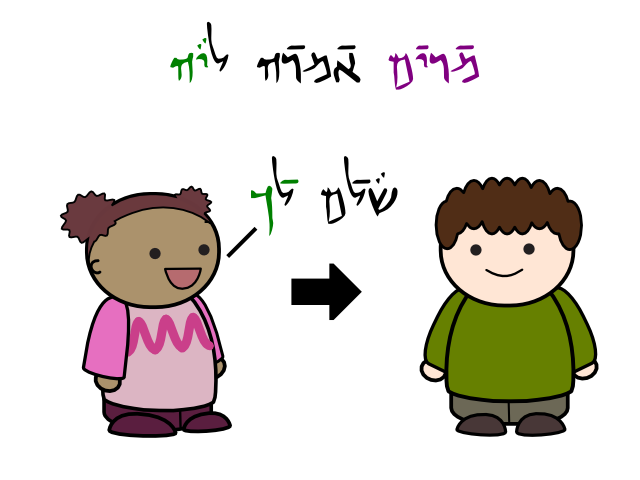
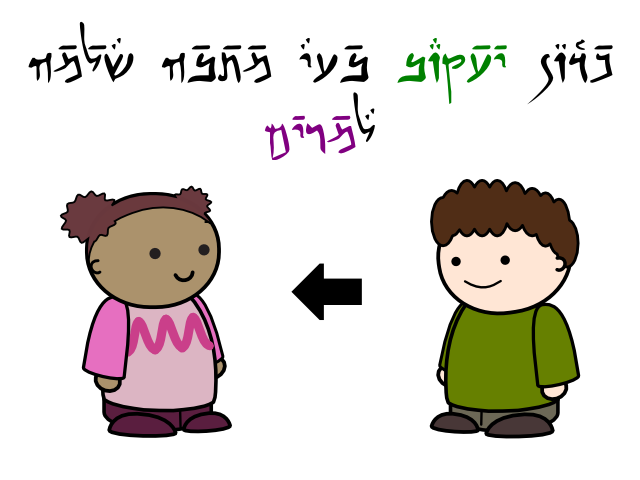
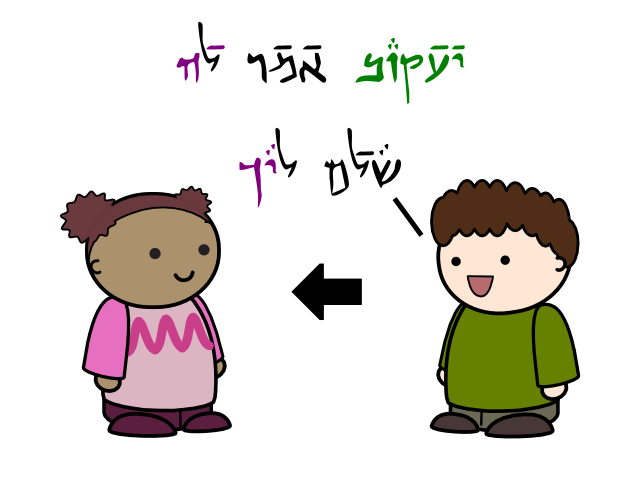
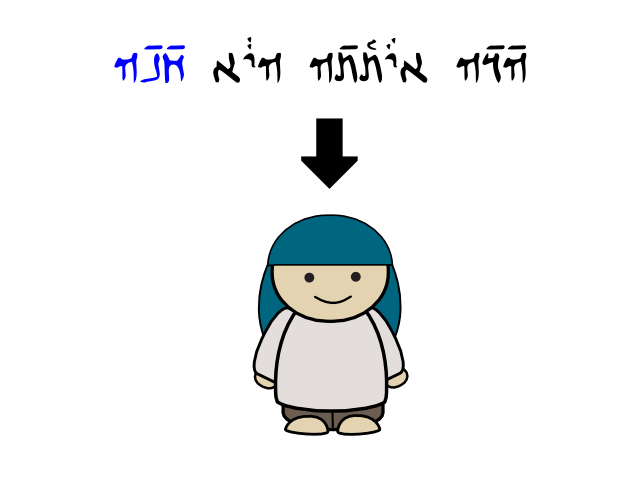
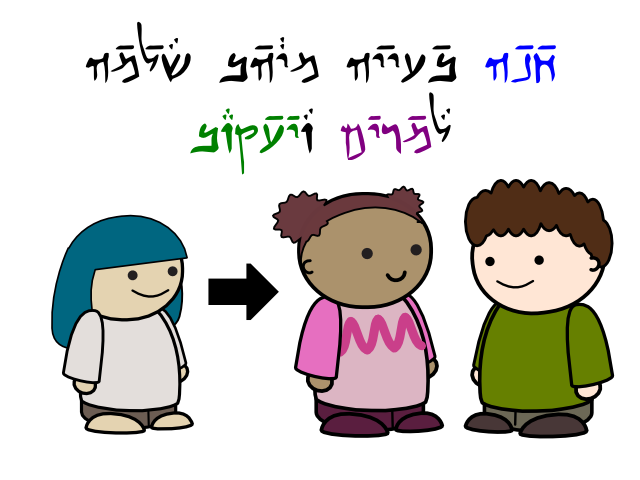
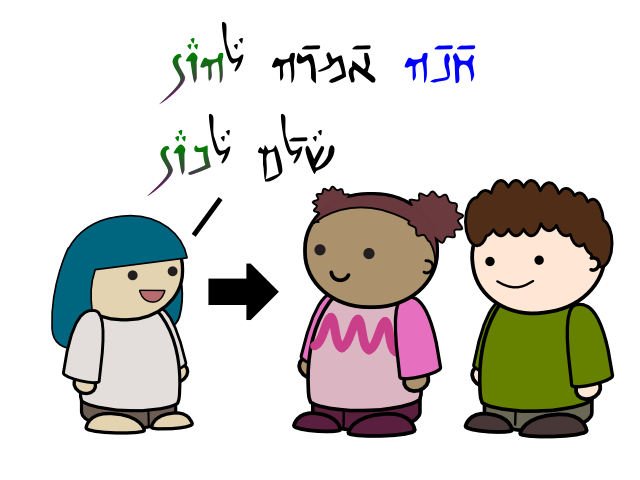
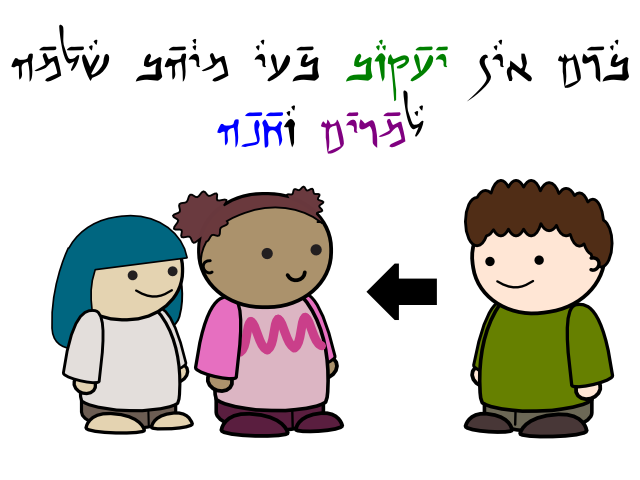
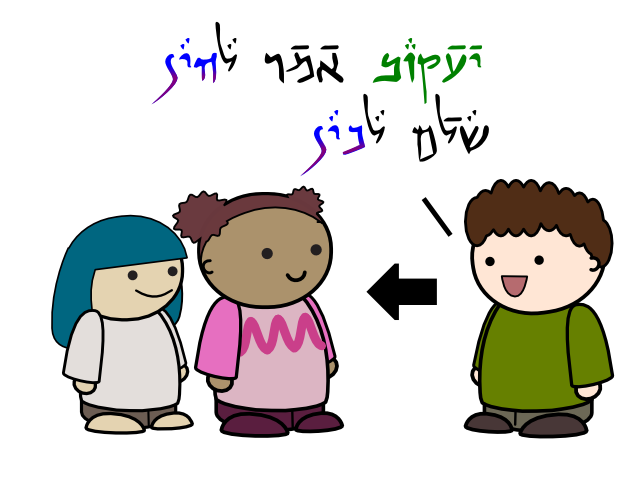
End of Part 1:
If you wish to practice more, advance to the next slide and re-start the audio above.
If you wish to go over the next part of the lesson, scroll down to Part 2.
Part 2: Going Over it in English
This slideshow could not be started. Try refreshing the page or viewing it in another browser.
Now to go over it in English…
To “say hello” in Aramaic is literally “to give the peace.”
Depending upon who is speaking and in what context, there are slight changes in how things are said.

“this” (fem.)
“the woman”
“she (is)”
“Mary”

“this” (masc.)
“the man”
“he (is)”
“Jacob”
and
are feminine.
and
are masculine.
The Singular




Singular Masculine vs. Feminine
= “to, unto, for”
Masculine:
Pronouns: = “(to) him,”
= “(to) you” (masc.)
Verbs: = “wants,”
= “says” (no ending)
Feminine:
Pronouns: = “(to) her,”
= “(to) you” (fem.)
Verbs: = “wants,”
= “says” (fem.) (end in -ah)
The Plural





Plural Masculine vs. Feminine
Masculine (& Common):
Pronouns: = “(to) them,” (pl.)
= “(to) you” (pl.)
Feminine:
Pronouns: = “(to) them,” (pl.)
= “(to) you” (pl.)
We’ll go over verbs later.
Review:
To a man:
To a woman:
To a group:
To a group of women:
Practice:
Over the next few slides, you’ll be presented with an image of whom you are to greet. Speak aloud and write down your response on a scrap piece of paper, and then advance to the next slide to see if you are correct.


?



?


?


?


?


?

End.
2 thoughts on “Unit 2: Lesson 1: Saying Hello!”
Leave a Reply Cancel reply
You must be logged in to post a comment.
What slides None of the arrows described in the tutorial are on my screen. Cannot make anything full screen I see no slides
Which web browser are you using, Chris?